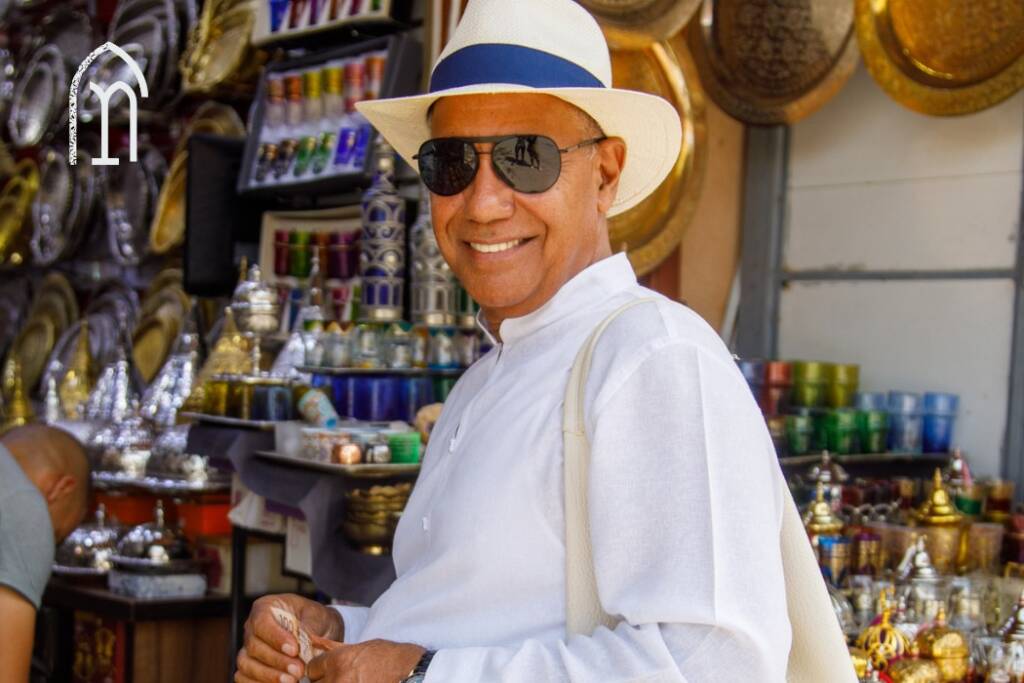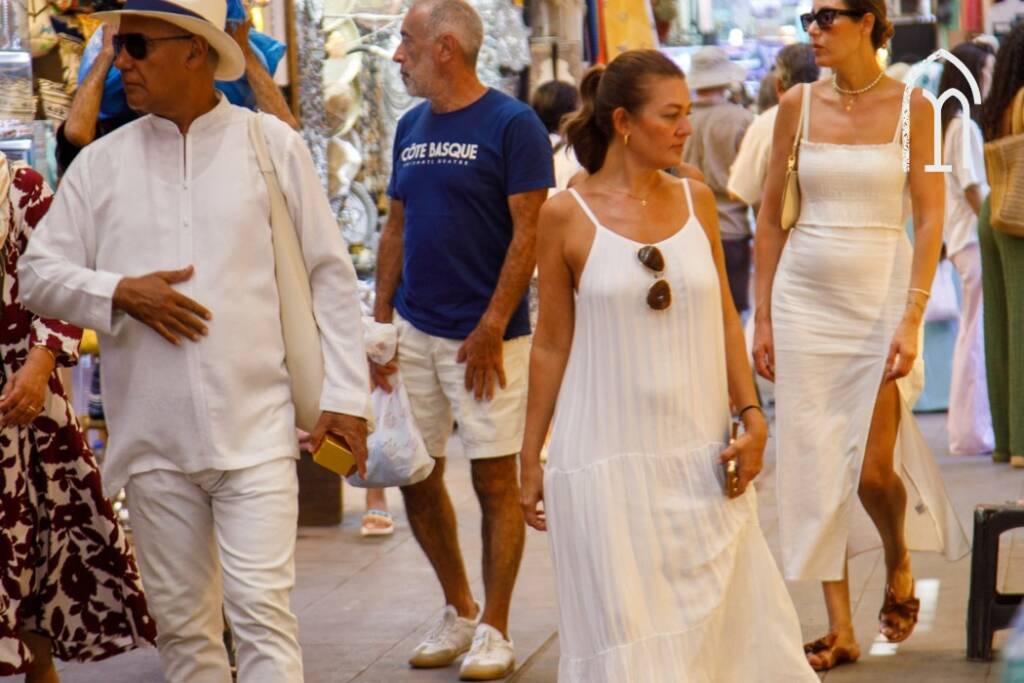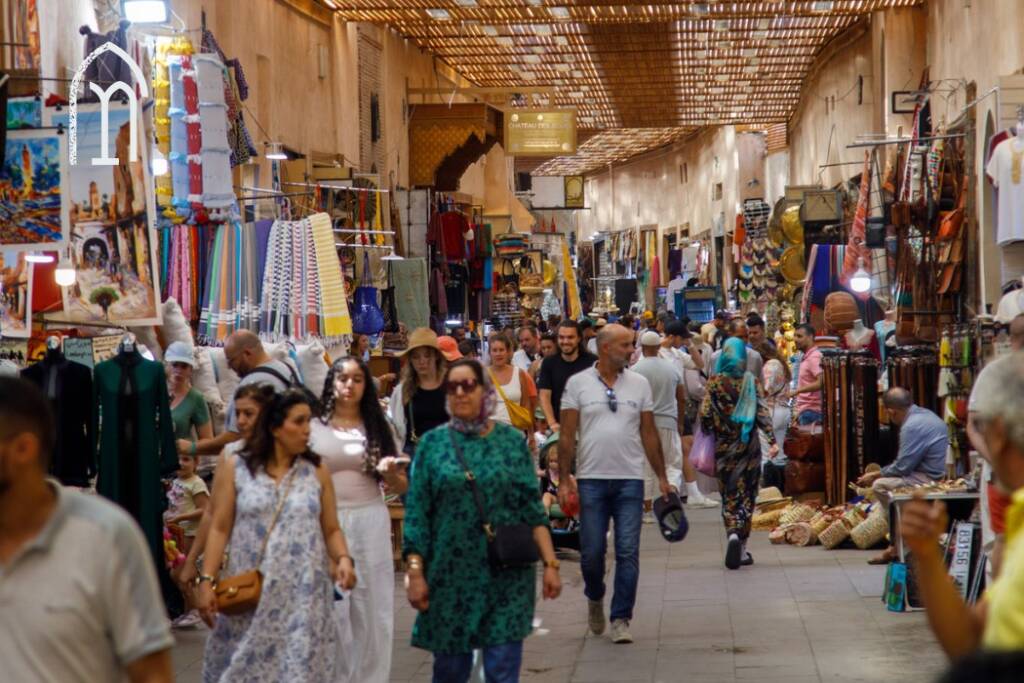What to Wear in Morocco as a Man
Travelling to Morocco is an adventure full of lively country and multicultural beauty. Even if the country is beautiful then you need to plan your vacation with beautiful and traditional clothes. We all know that planning a vacation with packing a suitcase full of clothes feels like a hassle. Many people are stuck in a situation where they don’t know what to wear.
In this guide, we will unwrap the tips, guides, and clothes ideas according to weather changes. This blog discusses what Men should wear in Morocco, what not to wear, and how to dress properly for any event. Let’s get into:
Understanding Moroccan Culture and Dress Code
Before choosing clothing, it is important to understand Moroccan culture. Morocco has French, Berber, and Arab influences. People living there have a traditional perspective on daily life and are proud of their traditions. People wear modern clothing, but tradition is part of the culture.
Although it is not traditional for men to dress in traditional Moroccan attire, it is appreciated when guests do so. When locals recognize that you are aware of their culture, they will treat you with respect. Stay clear of clothing that is too tight, sleeveless, or that exposes too much skin.
Respect for the culture ensures a smooth travel experience, even though this country may not be as strict as other Muslim nations. Men in Morocco dress in long pants, shirts, and occasionally traditional clothing like gandoras and djellabas. As tourists, you are not required to duplicate them exactly, but dressing modestly will help you fit in.
What Moroccan Men Wear
To understand how Moroccan people dress, the guide is for you. Dressing plays an important role if you plan to visit Morocco. A broken man’s dress can give you a better idea of what you need to choose and what will fit well. In the city’s men probably used jeans, shirts, or traditional outfits like a kurta and a djellaba. People love to wear traditional outfits for special occasions.

If we talk about rural areas, traditional and loose-fitting clothing is considered ideal for these areas. During Fridays or religious holidays, you will see more men in traditional attire. But if you are looking for a local experience, then you need to hand out on djellabas and a gandora. These attires are very comfortable, breathable, cool, and easy to wear, especially in the hot weather. Let’s talk about how to wear clothes according to different spaces:
1. What to Wear in Cities
Men usually dress in smart casual clothes in places like Rabat, Casablanca, and Marrakesh. For your walking routine, lightweight cotton shirts, chinos, or jeans will work just fine. You can wear a button-up shirt with rolled sleeves or a polo shirt.
These outfits are respectful of the natives while still being suitably fashionable. Avoid wearing anything that looks like gym clothes, such as shorts and sleeveless shirts. Even in hot temperatures, locals typically wear nice clothes. Try to seem clean and neat if you want to blend in. On a city trip, a short-sleeved shirt and linen pants are ideal.
When you go to restaurants or rooftop restaurants in the evening, dress more stylishly. A long-sleeved shirt looks elegant without being too formal when paired with loafers or comfortable shoes. The majority of restaurants don’t have strict dress standards, yet presenting yourself well is valued everywhere.
2. What to Wear in Rural Areas
This is one of the most important question that people wants to know. While travelling in big cities like the Atlas Mountains or small Berber villages, an interesting sense is important. Most of the locals in rural areas love to wear traditional clothes. You can wear long pants while meeting other people or visiting the markets.

Avoid wearing shorts, which seem out of modesty. Always have a light-fitting shirt with low sleeves. This will be an ideal dress that will not only protect you from the sun but also show it respect. For your comfort, you can choose cotton trousers and hiking pants. You might see a lot of people wearing dajlabad or long robes in the streets.
These traditional wearings are perfect for climate change. You don’t need to purchase them for your tour, you can purchase them at a rental price for only your stay. The special thing is that in these areas, people are very friendly and kind. They show kindness and respect to their traditions. We really appreciate it when visitors understand our values.
3. What to Wear in the Desert
You should absolutely dress practically if you plan to visit the Sahara Desert while in Morocco. The desert can have extremely high daytime temperatures and freezing nighttime temperatures. Put on loose-fitting cotton or linen clothing.
Light-colored clothing helps keep your skin cool by reflecting sunshine. To prevent sunburn, put on long sleeves. In the desert, a cheche, a light scarf or turban, is helpful. It shields your head and neck from the sand and sun. Scarves are available on many desert tours, or you can purchase one from nearby stores.
The temperature will decrease greatly during the night. To stay warm, pack a lightweight jacket or hoodie. The nights are quite cool, even though the day feels hot. Walking on sand also requires comfortable shoes or sandals with thick bottoms.
4. What to Wear at the Beach
Morocco has very beautiful coastal towns like Essaouira and Agadir. These are the famous wine places where you can enjoy the beach time. However, beach rules are more conservative than in Western countries. A man can easily wear swim trunks. But wearing not too short or too tight is the best decision.
Always wear a shirt while walking around the beach or going to cafes near the beach. Broken people don’t like too much skin attention because they can attract unwanted people. If you are staying at a private resort, then the rules are more relaxed. You can wear whatever you want in that private area.
Always dress politely and modestly when moving through the public spaces. A linen shirt, shorts, and flip flops are perfect for your casual beach strolls. The goal is to stay cool while still being respectful in Morocco.
5. What to Wear in Mosques and Religious Sites
To visit any sacred location, one must dress properly. The well-known Hassan II Mosque in Casablanca is one of the few mosques in Morocco that are accessible to non-Muslims. It is best to wear long pants and a shirt with sleeves when entering. Stay away from shorts, sleeveless tops, and anything with various prints.
You can spend time without drawing unwanted attention by dressing carefully, which also shows respect for the residents’ faith. Men don’t have to cover their heads, but having a light scarf on hand can assist in protecting them from the sun and dust.
6. What to Wear During Winter
Morocco’s winters can be quite chilly, particularly at night or in the mountains. Adding layers will be beneficial. During the day, you can typically get by with a lightweight sweater or fleece jacket, but if you’re traveling north, say, to Chefchaouen or into the Atlas Mountains, you might want something a little heavier.
You can still wear comfortable shoes, jeans, and tees, but have a jacket or scarf close at hand. The weather in coastal locations is still often pleasant, so having a variety of warm and light clothing options provides you with flexibility. The good news is that layered outfits are a natural fit for Moroccan fashion, allowing you to look fashionable while staying comfortable.
Other Factors of Wearing
There are a lot of other things that we need to consider. What stuff, fabric, color, and quality matter? Let’s understand the detailed guide below:
1. Fabrics and Colors Guide for Men
The right fabric makes a very big difference in your clothing. Cotton, linen, and light blends are best for visiting Morocco in the warm weather. These best materials a lose in the year to pass through and keep you fresh and cool. These materials are ideal for those who sweat more on sunny days. Always avoid synthetic fabrics because they trap heat and make you feel hot all day.

When it comes to color selection, light colors and shades work best during the day. These include beige, white, light blue, and skin color. These colors help to reflect the sunlight and make you feel refreshed. Evening dark shades, like Olive, Brown, or Navy, look elegant and stylish. These colors provide a few heat so you feel cozy and comfortable at night. Neutral colors also help all the men who wear locals.
If you plan to purchase clothes in Morocco, you will find beautiful handmade fabrics and traditional patterns there. That looks very light and comfortable for wearing. Moroccan tailors can also customize clothes at a good price to give you a memorable visit.
2. Weather and Seasons in Morocco
Depending on the area, Morocco has a variety of weather conditions. The majority of the year is warm in coastal cities like Rabat and Casablanca. The Atlas Mountains remain cool even in the warmer months, but Marrakesh and Fez may get extremely hot in the summer.
The Sahara Desert experiences extremely high daytime temperatures and low nighttime temperatures. You should prepare for extreme temperatures when visiting in the summer, particularly in Marrakesh. It’s ideal to dress in loose, cool clothing. Layering is important because wintertime evenings can get chilly.
You can wear a lightweight sweater or jacket that you can quickly take off during the day. Therefore, knowing the season aids in the appropriate planning of clothing. Additionally, Morocco’s environment shifts quickly as you go from one area to another, so always pack one layer of clothing to stay warm.
3. Footwear Choices for Morocco
The shoes represent a significant feature of your clothing in Morocco. Comfortable shoes are important because you will be going through marketplaces and small streets a lot. For cities, walking shoes or sneakers work best.
In crowded places, stay away from exposed sandals because the streets can get dusty. Additionally, pick shoes that will shield your feet from the hot sand if you are traveling to the desert. Closed sandals or hiking boots are suitable. In the evening, leather shoes or loafers are fashionable, especially for luxurious restaurants.
Before entering, many “riad” or residence requests ask individuals to remove their shoes. Slip-on shoes do, therefore, make things easier. Comfort and usefulness should always come first when packing shoes in Morocco.
4. Luxury or Formal Dressing
Bring one or two beautiful outfits if you plan to treat yourself in luxurious hotels, go to events, or eat at good restaurants. When paired with fitted pants, a linen shirt is both stylish and warm.
Although a suit is not necessary, an organized appearance greatly enhances the impression. Being well-dressed also helps with feeling at home at some of the luxurious riads and dining establishments. A light jacket or blazer completes the ensemble if necessary.
5. Shopping for Clothes in Morocco
Morocco is an excellent destination for clothing purchases. Local markets, or marketplaces, are a great place to find handmade clothing, scarves, and traditional attire at reasonable prices. These large cities, like Fez or Marrakech, have tailors who can rapidly make you a pair of pants or a shirt.

It is simple to find decent clothing in Morocco if you need lighter clothing or forgot anything. In this environment, the native textiles are very breathable and flexible. Purchasing clothing locally allows you to support small businesses and blend in with the environment.
Things to Avoid Wearing
When packing and clothing for Morocco, stay away from items that can be too casual or too revealing. It’s recommended to stay away from tank tops, torn denim, really low shorts, and colorful graphics. Don’t wear large logos or fencing wording print on the shirts because these are wrong type of attention.
If you’re not on the beach, don’t dress like you’re heading there. Locals are able to dress modestly and stay cool even in high temperatures. You should follow suit so that you can blend in. Remember that Morocco is a friendly nation. Respectful attire makes your vacation go more smoothly, yet tourists are still valued.
Final Tips for Dressing in Morocco
When in doubt, dress simply and comfortably. The temperature might drop quickly, so always pack a light jacket or scarf. Choose shoes that will allow you to walk for extended periods of time in comfort. Morocco experiences sunny weather throughout most of the year, with high temperatures, particularly in the south and the desert. It’s a very touristic country where everyone can dress as they wish, but it’s important to stay comfortable and consider the hot weather of Morocco. Light, breathable, and comfortable clothing is highly recommended.
Stay clear of clothing made of heavy fabrics or that is overly exposing. It shows maturity and good manners to dress in accordance with local customs. Additionally, it protects you from unwelcome attention and facilitates communication with Moroccans.
Conclusion
What to wear in Morocco as a man is important to discuss, and we already covered every aspect of the wearing guide. The key is modesty, comfort, and styling. Morocco is full of a mixture of tradition and modesty that allows the traveler to show their dress respectfully. Always pack easy and breathable clothes for your warm days. Add layers of dresses for your cool evening.
Don’t forget to add modest outfits for cultural visits and traditional outfits. Whether you explore the biggest streets of Marrakesh, hike through the mountains, or watch the sunset in the Sahara, your clothing should be very easy so that you to enjoy the journey. Always dress smartly in Morocco to feel confident and respectful. Enjoy the most beautiful and welcoming culture in the world with your comfortable dressing!
FAQs
1. Can men wear shorts in Morocco?
Yes, men can wear shorts in Morocco, but it depends on where you are. In tourist areas like Marrakesh or along the beach in Agadir, wearing knee-length shorts is fine. However, in rural areas or religious places, it’s better to wear long pants to show respect for local customs.
2. Are sleeveless shirts okay for men in Morocco?
It’s best to avoid sleeveless shirts in Morocco, especially in public places. Locals rarely wear them outside gyms or beaches. A short-sleeve or light cotton shirt keeps you cool and looks more appropriate in most settings.
3. What should men wear when visiting a mosque?
When visiting a mosque, men should wear long pants and a shirt with sleeves. Avoid tight or revealing clothes. Some mosques may provide cover garments if needed, but dressing respectfully from the start is the best choice.
4. Can I wear jeans in Morocco?
Yes, jeans are very common in Morocco. They are suitable for city visits, casual walks, or restaurants. Choose lightweight jeans for comfort during hot days. Pair them with a cotton shirt or polo for a simple but neat look.
5. Is it okay to wear t-shirts in Morocco?
T-shirts are perfectly fine for men in Morocco as long as they are not sleeveless or have offensive prints. Plain or lightly designed shirts are the best choice. They go well with jeans, chinos, or casual pants.
